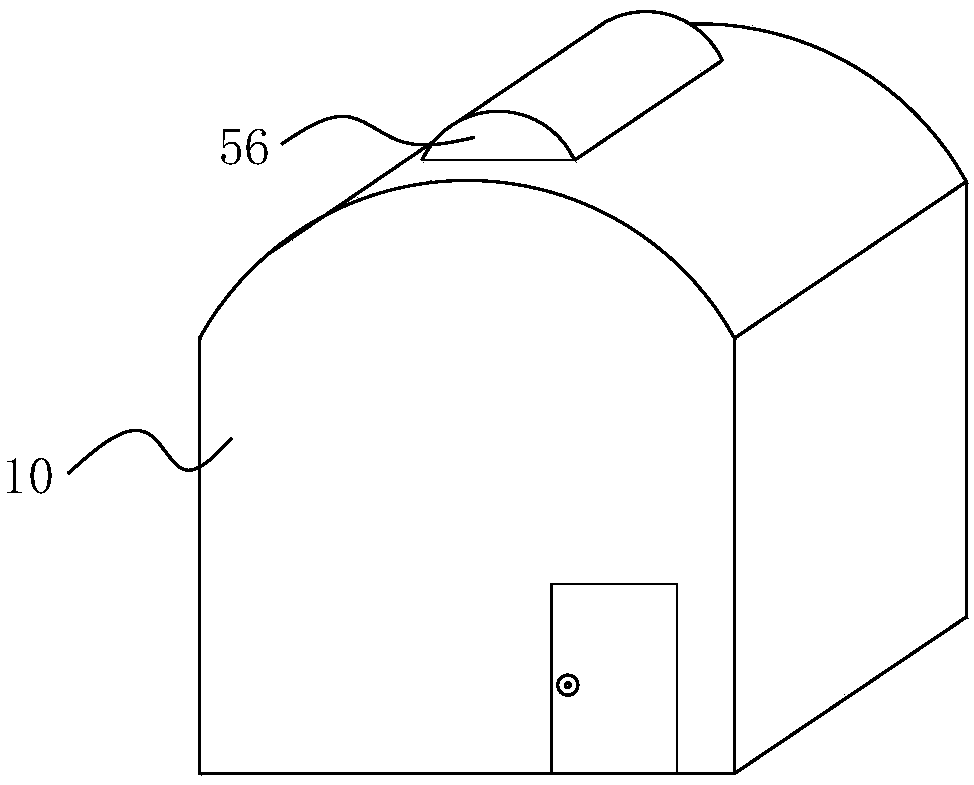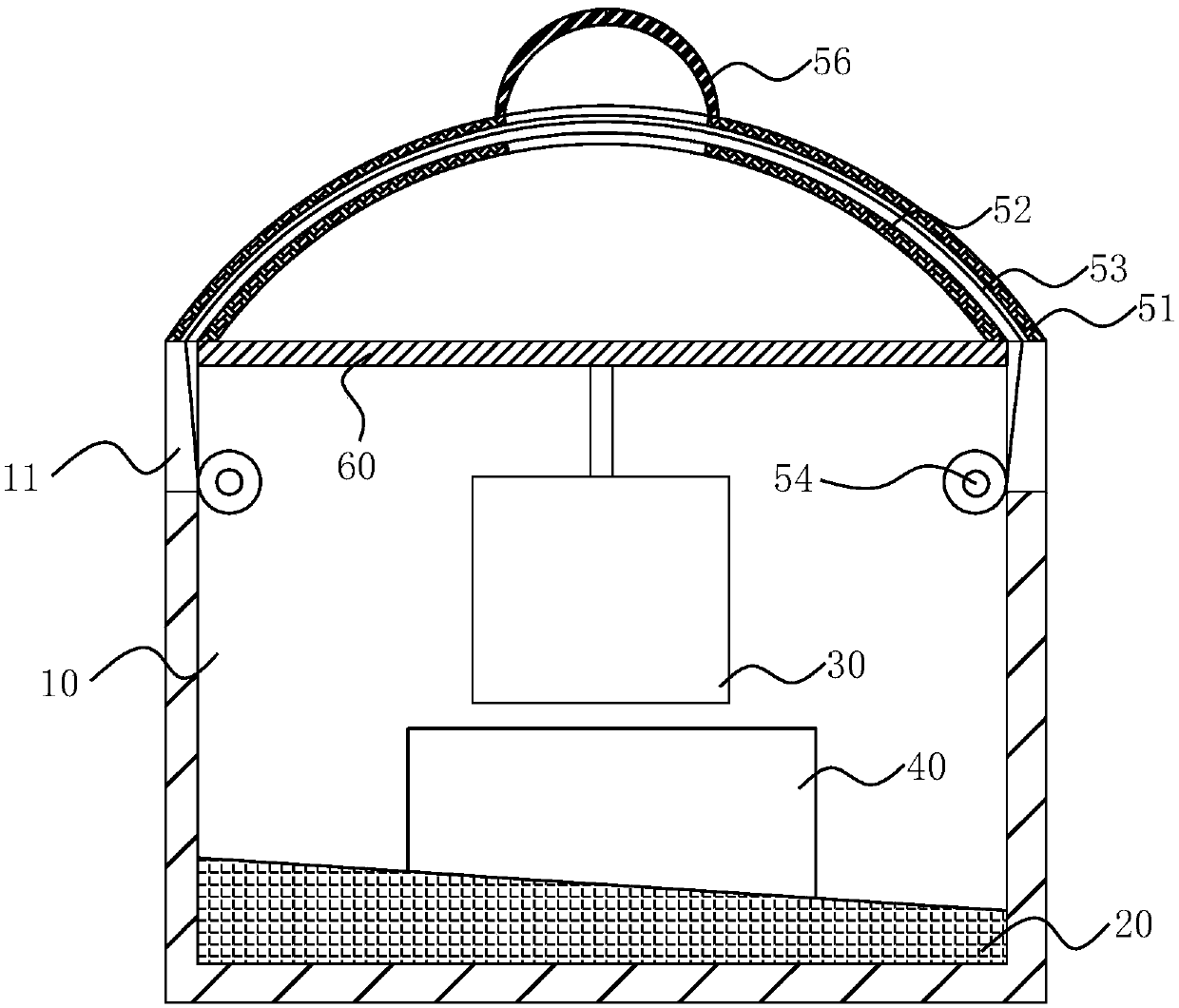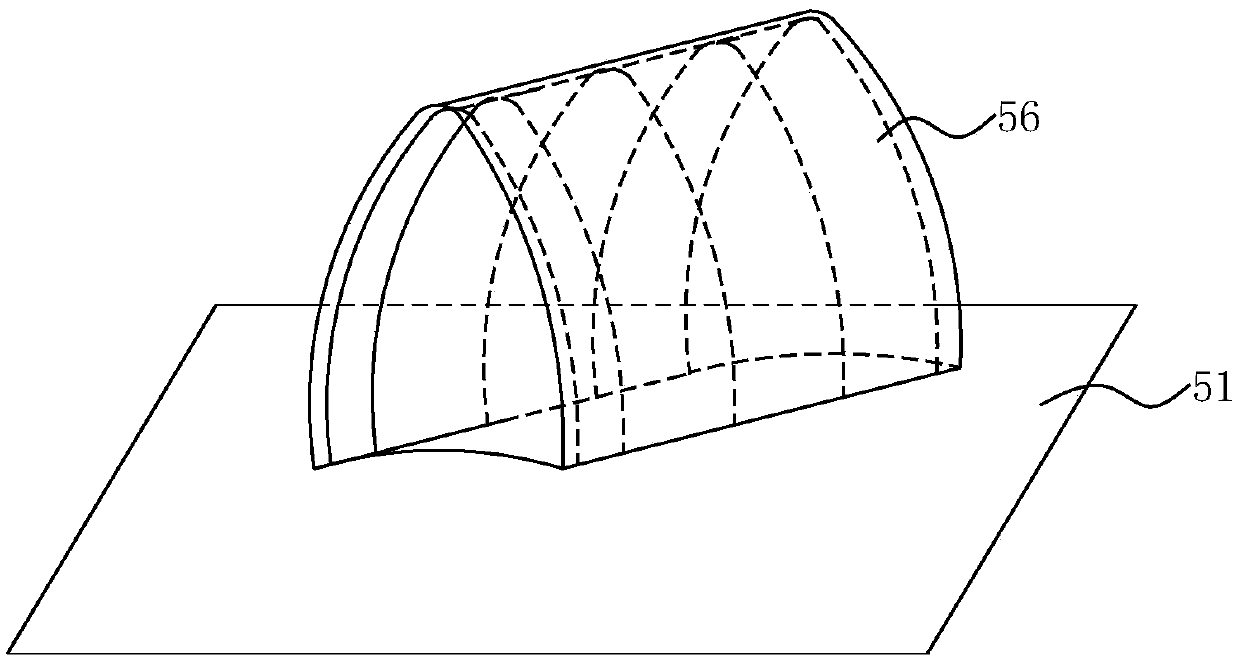High-altitude mountainous area yak feeding system
A cowshed and feeder technology, applied in the field of animal husbandry, can solve problems such as rough taste, no better solution, and low fat content, and achieve the effects of ensuring nutritional intake, saving manpower and financial resources, and simple operation
- Summary
- Abstract
- Description
- Claims
- Application Information
AI Technical Summary
Problems solved by technology
Method used
Image
Examples
preparation example Construction
[0042] The preparation method of the concentrate is as follows: put each component into a mixer, add 20 to 35 parts of water, pulverize, stir and mix evenly at 25 to 35°C, and continue to stir for 2 to 3 hours, extrude, and dry at room temperature. Get the feed you need.
[0043] Wherein, the formula of the feed additive is: by weight, 10-15 parts Gynoside, 3-5 parts Panax notoginseng saponins, 3-5 parts berberine, 1-3 puerarin, 1-3 2 to 5 parts of Shouwu vine, 1 to 3 parts of Salvia miltiorrhiza.
[0044] Among them, in order to remove the toxic and harmful substances in the Shouwu vine, it is preferable to use the Shouwu vine after pretreatment. The present invention uses supercritical fluid extraction to remove the toxic and harmful substances therein.
[0045] The specific processing method is as follows:
[0046] Shouwu vine is crushed to pass through an 80-mesh sieve and put into a supercritical extraction device, using SC-CO 2 For extraction, SC-CO 2 The flow rate i...
Embodiment 1
[0053] Example 1: Pretreatment effect of Polygonum multiflorum
[0054] 1. Weigh 20 groups of equal amounts of Shouwu vines that have been crushed and passed through a 80-mesh sieve. Each group has 3 replicates, and pretreatment is carried out according to the above method. The pretreatment conditions of each group are shown in Table 1. In addition, set a group of Shouwu vines with the same amount, crushed and sieved, without pretreatment, as a control group.
[0055] Table 1 Comparison table of pretreatment conditions of Shouwu vine in each group
[0056]
[0057]
[0058] 2. Before and after pretreatment, the contents of Cu and Pb ions were measured for the Shouwu vines of each group, and 2,3,5,4'-tetrahydroxystilbene-2-O-β-D-glucose Glycoside content determination; And calculate the difference rate (%) of each content respectively, described difference rate=(M1-M2) / M1, described M1 is the analyte content before pretreatment, and M2 is the analyte after pretreatment ...
Embodiment 2
[0062] Example 2: Effect of Feed Additives on Yak Growth and Meat Quality
[0063] 1. Prepare 12 groups of concentrated materials and mixed materials according to the above method, among which, the coarse material is selected from highland barley straw, and the diameter is controlled at 3 to 5 cm. The specific components of the feed additives in the concentrates and mixtures of each group are shown in Table 3. Wherein, the concentrate formula is: by weight, 12 parts of highland barley, 37 parts of corn, 42 parts of soybean meal, 1 part of VC, 1 part of VE, and 2 parts of feed additive. The preparation method of the concentrate is as follows: put each component into a mixer, add 35 parts of water, pulverize at 25°C, stir, mix evenly, and keep stirring for 3 hours, extrude, and dry at room temperature to obtain the product. The microbial composition is, according to the amount of viable bacteria, Bacillus subtilis: Bacillus licheniformis: Lactobacillus: Bifidobacterium = 1:1:1:...
PUM
 Login to View More
Login to View More Abstract
Description
Claims
Application Information
 Login to View More
Login to View More - R&D
- Intellectual Property
- Life Sciences
- Materials
- Tech Scout
- Unparalleled Data Quality
- Higher Quality Content
- 60% Fewer Hallucinations
Browse by: Latest US Patents, China's latest patents, Technical Efficacy Thesaurus, Application Domain, Technology Topic, Popular Technical Reports.
© 2025 PatSnap. All rights reserved.Legal|Privacy policy|Modern Slavery Act Transparency Statement|Sitemap|About US| Contact US: help@patsnap.com



